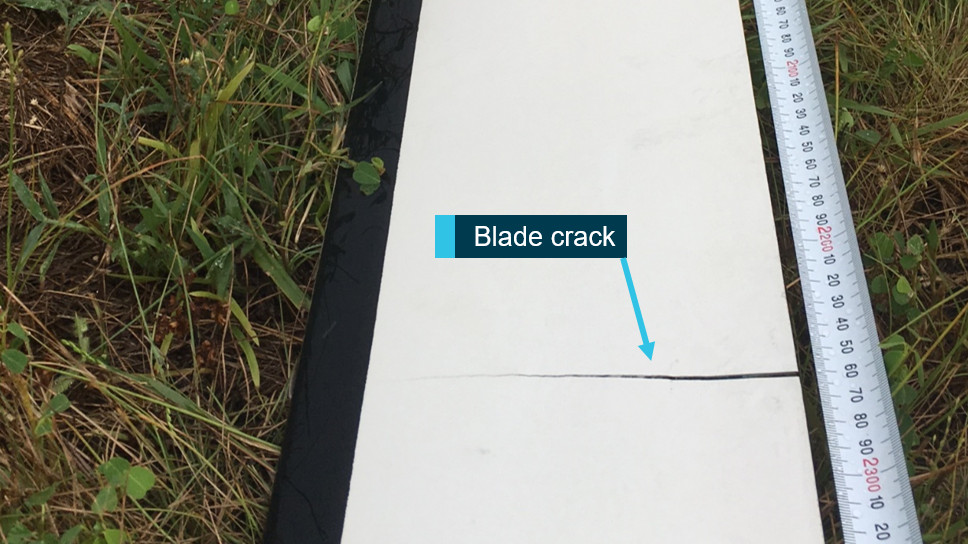
A large crack across the width of a Robinson Helicopter Company R22 helicopter’s main rotor blade demonstrates that unexpected fatigue cracking can occur on critical flight components, and serves as a reminder to pilots and maintainers of the importance of vigilance during pre-flight and daily inspections, an ATSB investigation notes.
The R22 Beta helicopter, registered VH-HPH, was conducting mustering at Labelle Downs Station in the Northern Territory on 16 December 2016 when the pilot noted the onset of vibrations. In response, the pilot successfully conducted a precautionary landing and shut down the helicopter. A subsequent ground inspection revealed a significant crack had progressed almost entirely through the cross-section of a main rotor blade.
“Technical analysis of the main rotor blade at the ATSB’s facilities in Canberra identified that a significant fatigue crack had propagated almost entirely through the blade chord,” said ATSB Director Transport Safety Stuart Macleod. “This led to instability and vibrations of the aerofoil structure during the occurrence flight.”
If main rotor vibration rapidly increases or becomes severe during flight, make an immediate precautionary landing.
The analysis identified that the fatigue crack initiated at the trailing edge bond line and propagated through both the upper and lower blade skins until terminating at the leading edge D-spar.
The ATSB’s investigation was unable to determine conclusively which factors – either individually or in combination – contributed to the crack initiation, but said it was possible a number of variables influenced the initiation of the blade cracking, including the component’s design, manufacture and operation.
“This incident reinforces to helicopter pilots, operators and maintainers that they should be particularly vigilant during the daily or pre-flight inspections,” Mr Macleod said. “Inspections represent important opportunities to detect cracking that may not be obvious. Any form of damage such as paint blistering, denting and corrosion to the main rotor blade surfaces is cause for further investigation.”
Following the occurrence, Robinson issued a safety alert to all R22 operators detailing the crack location and recommended particular attention from pilots and maintainers when visually examining the trailing edges of blades during the daily or pre-flight inspection.
“Robinson warns that if main rotor vibration rapidly increases or becomes severe during flight, make an immediate precautionary landing,” Mr Macleod said. “Do not attempt to continue flight to a convenient destination.”
Mr Macleod noted that during the incident flight, the pilot’s action to land the helicopter prevented further deterioration of the main rotor blade surface and removed the potential for an in-flight blade separation and subsequent loss of control.
Robinson subsequently implemented a minor design change to the A016-6 blade design, extending the length of the trailing edge metal doubler to eliminate potential stress gradients. The revised blade entered production in February 2017.
Separately, the Civil Aviation Safety Authority issued an Airworthiness Bulletin to alert all R22 operators and maintainers to the occurrence, and to provide advice on how to avoid future occurrences.


